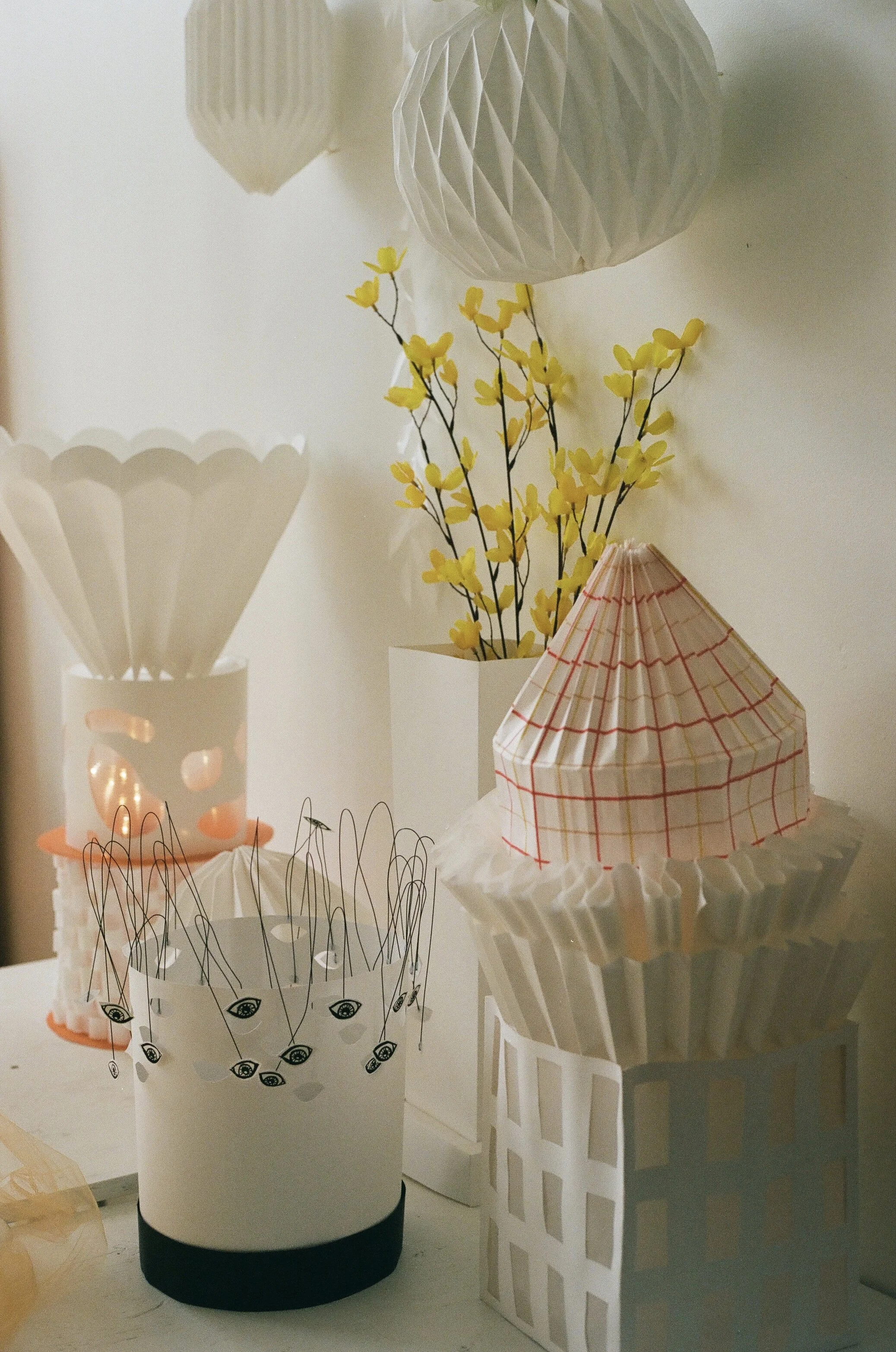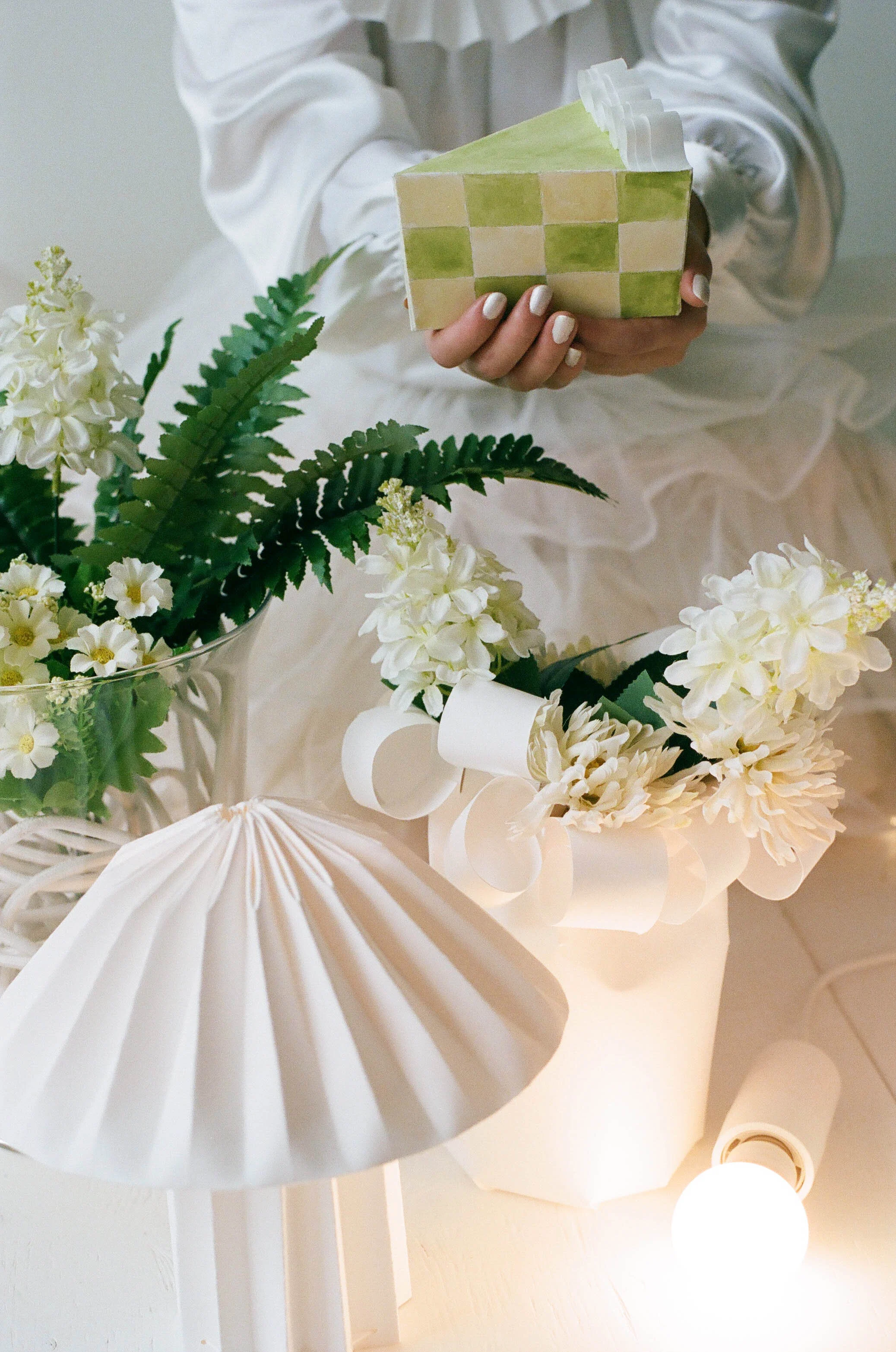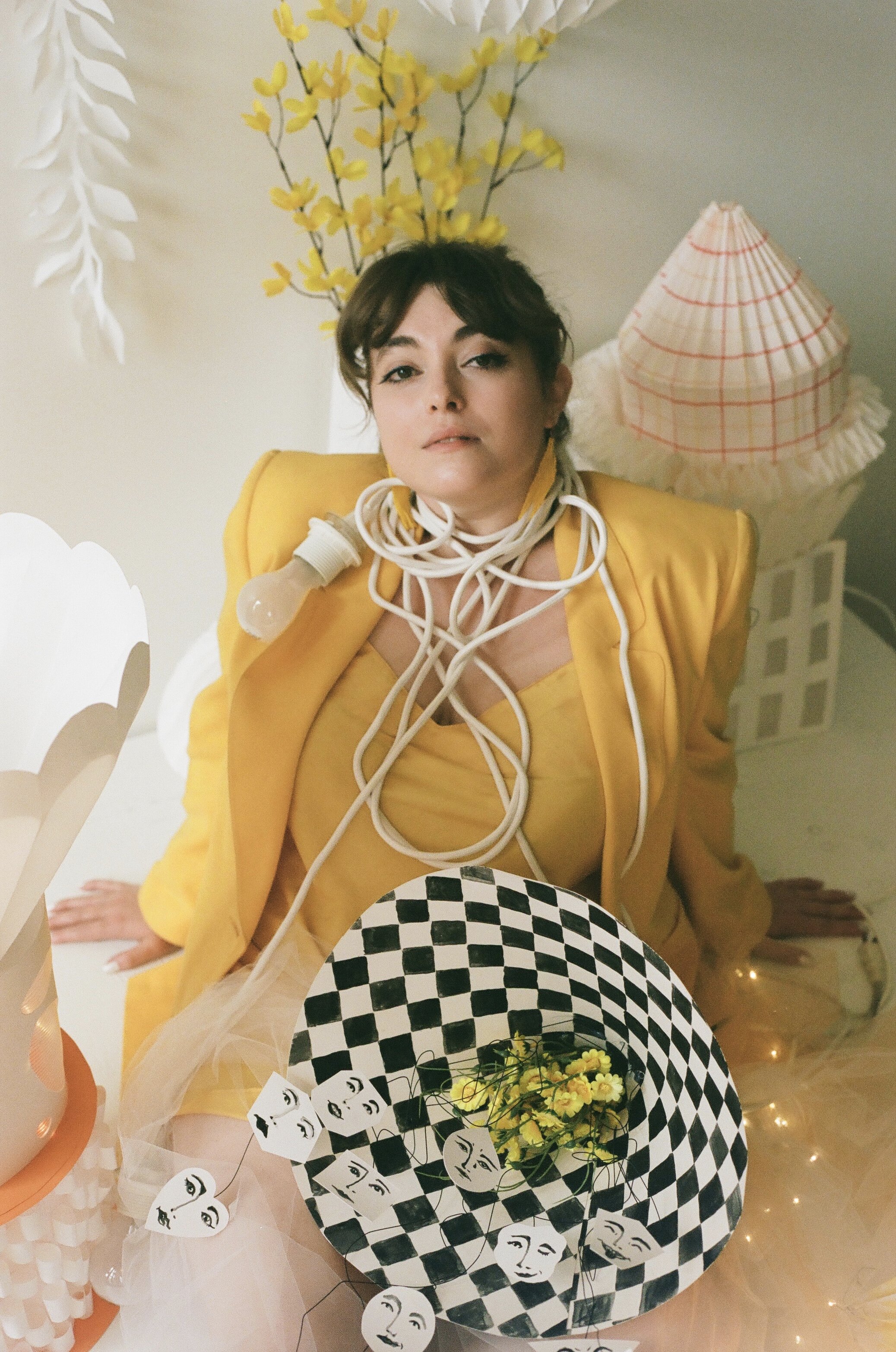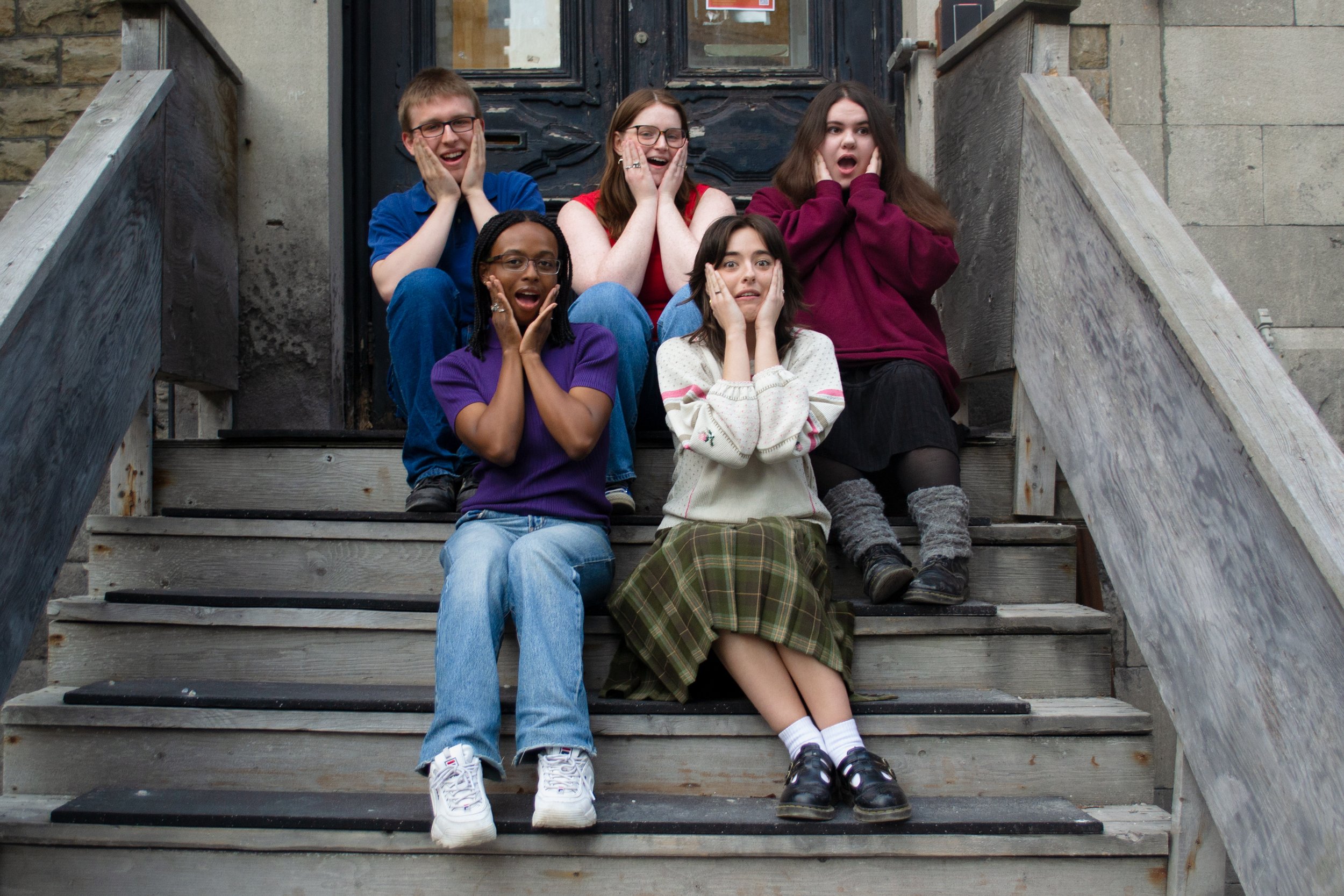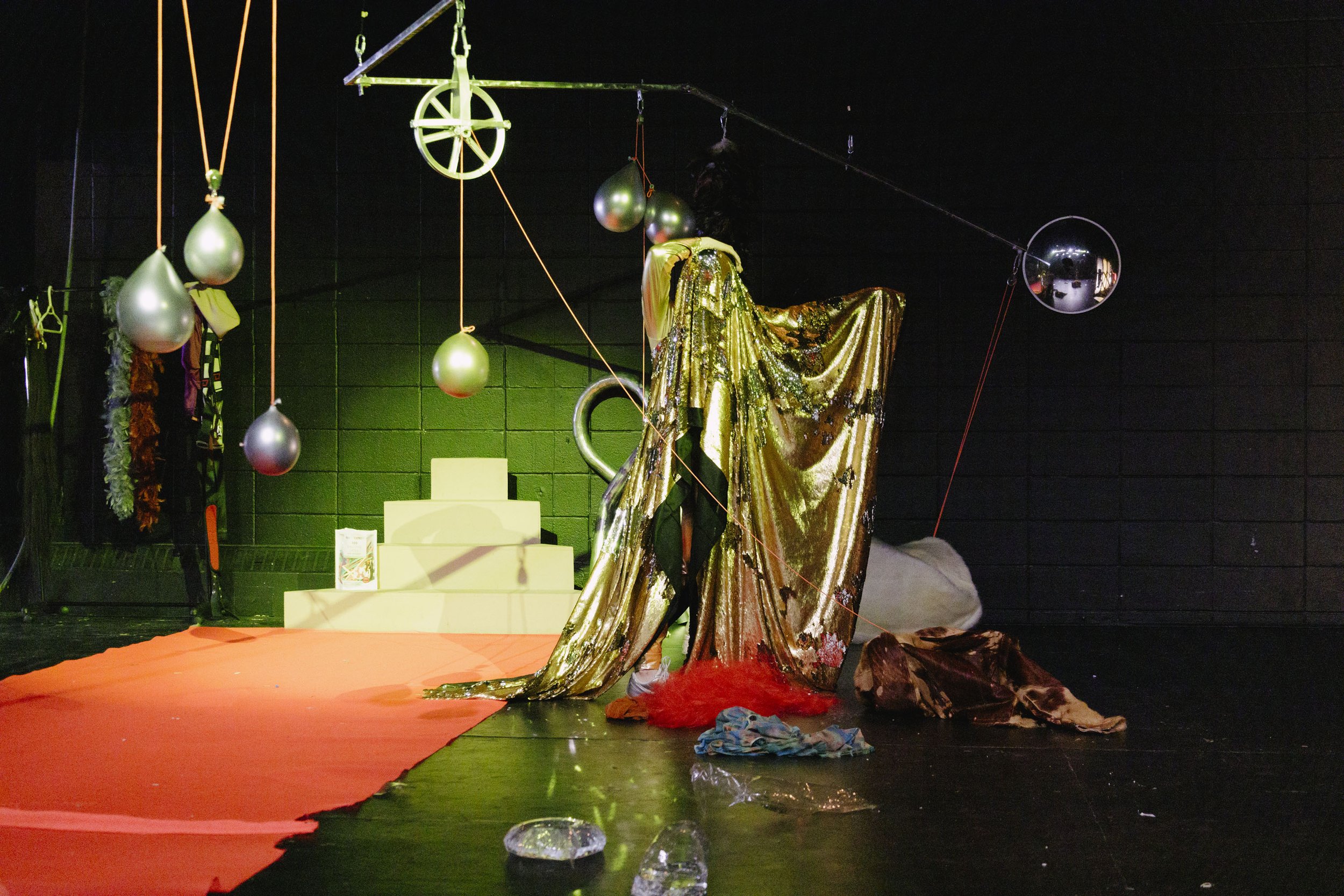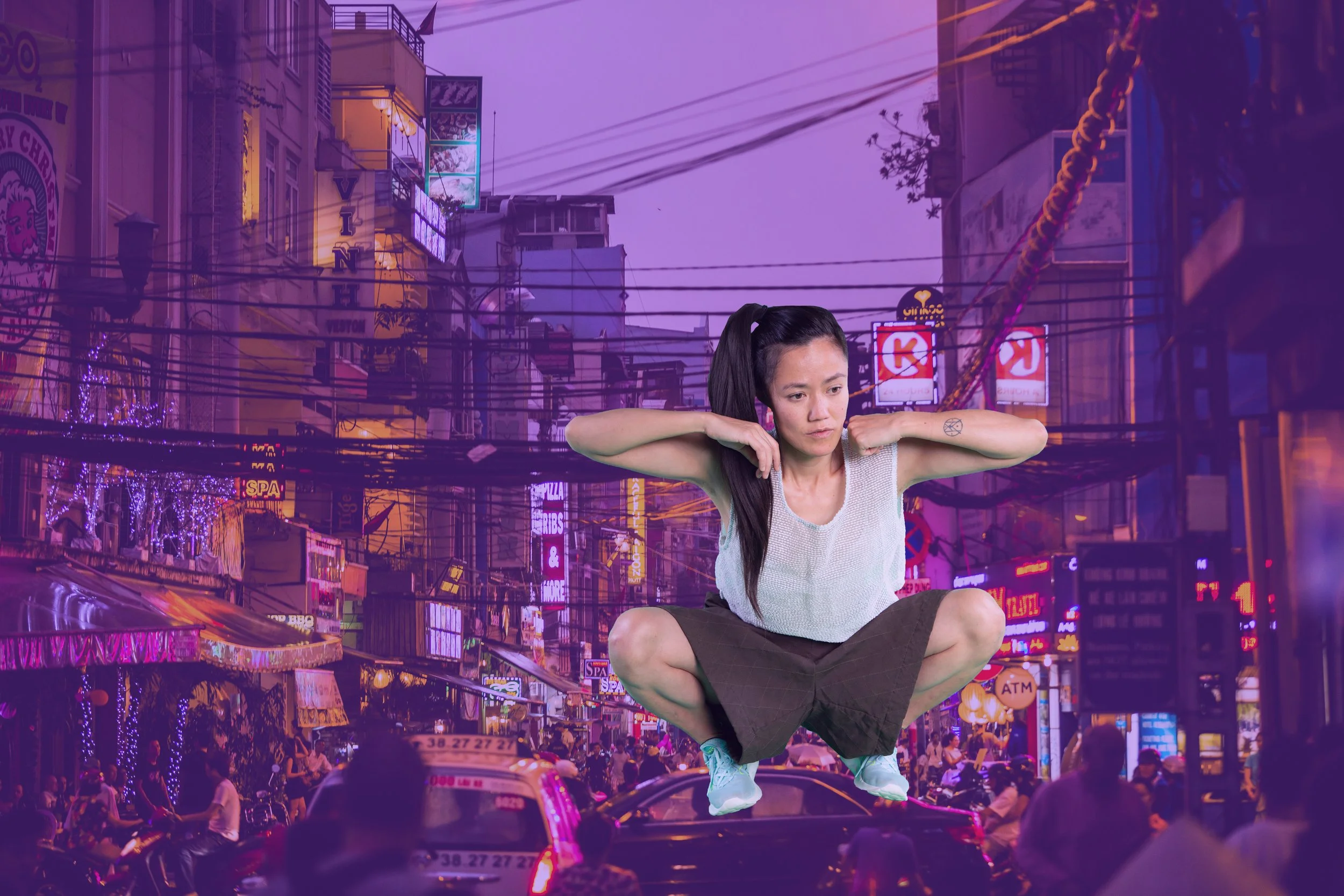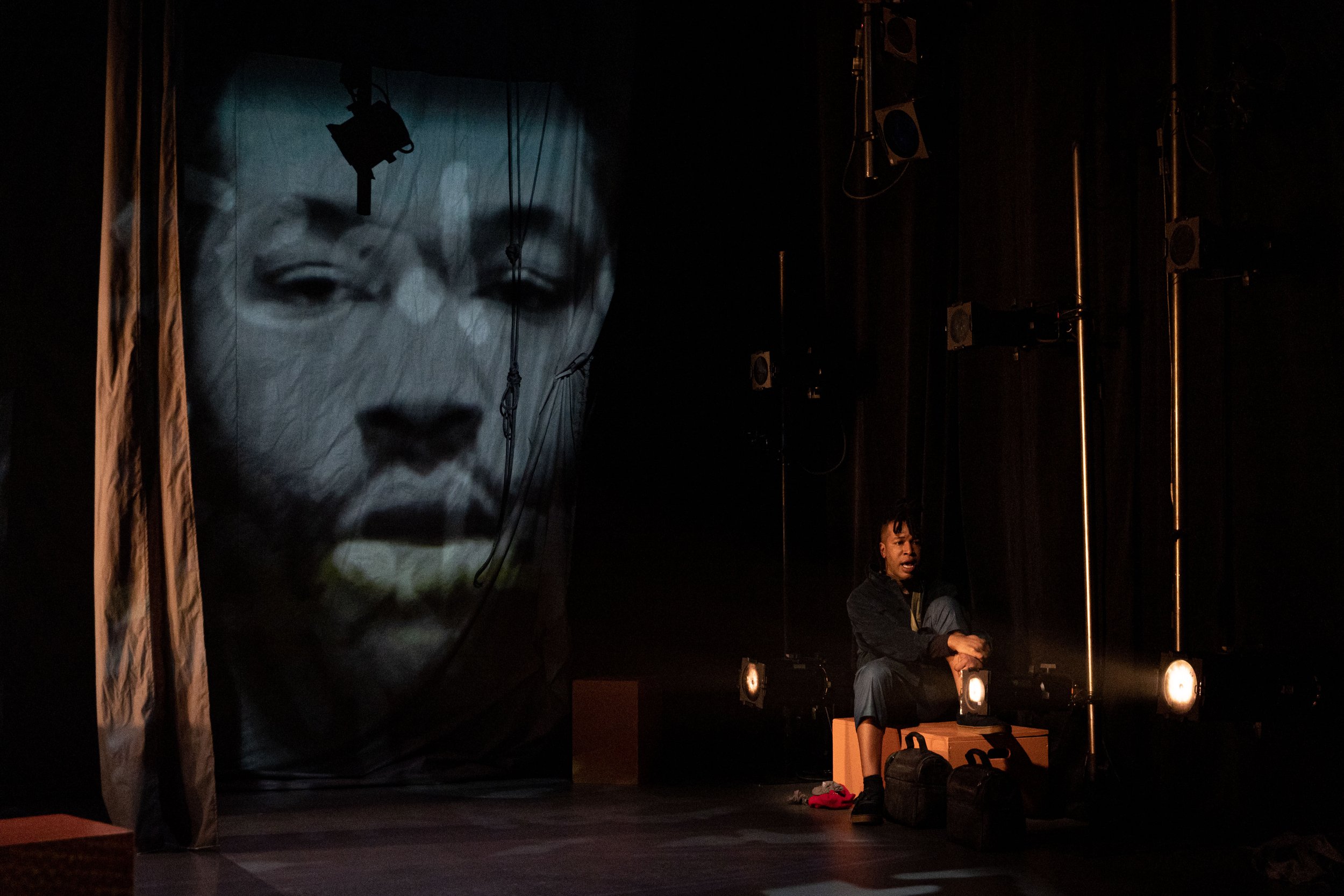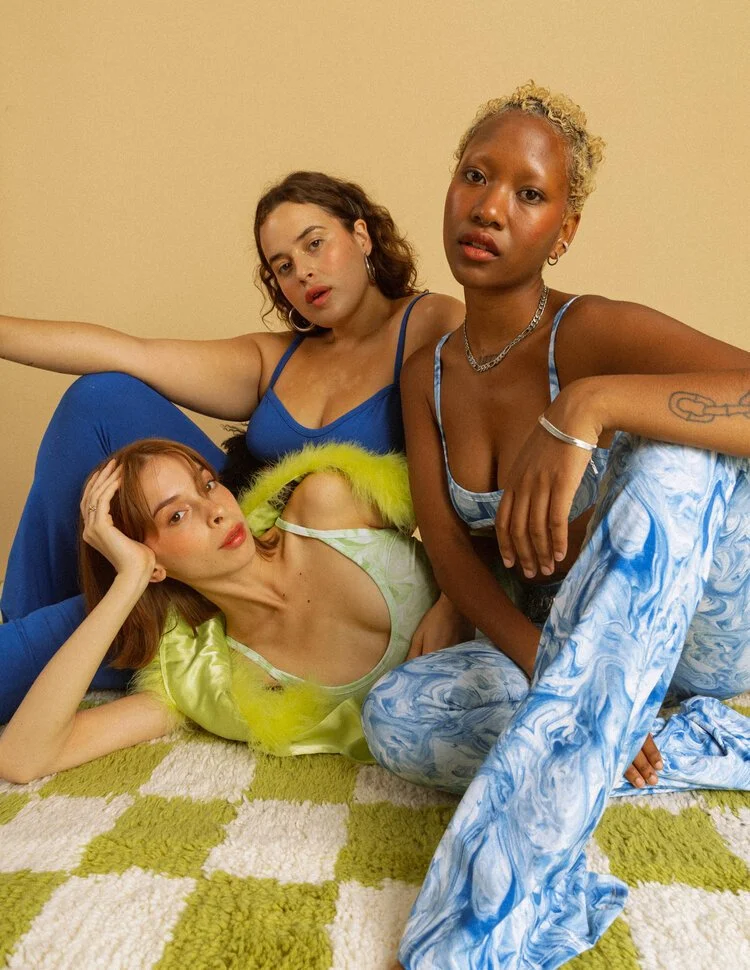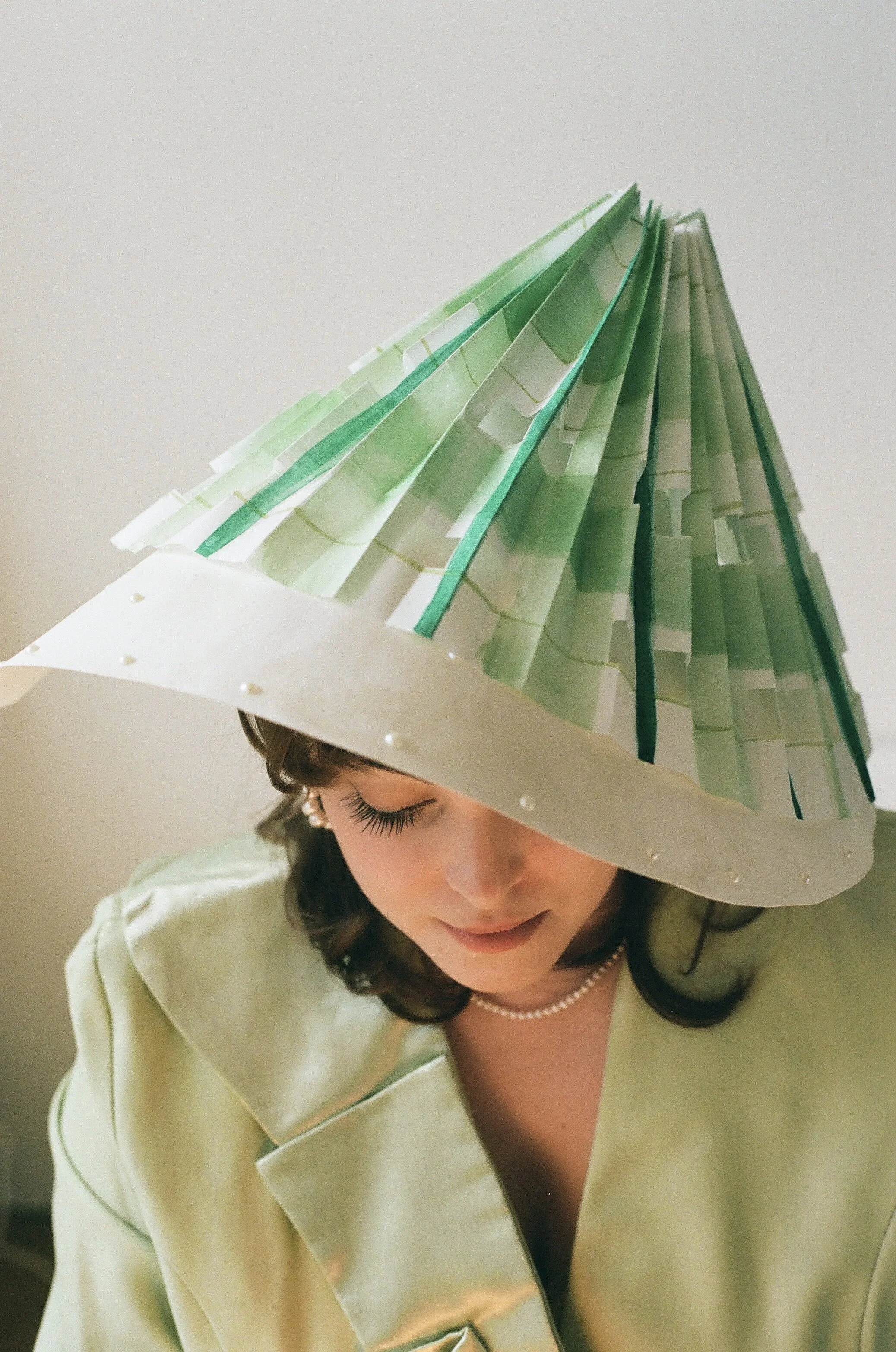Artist Spotlight: Camila Gaza Manly / @lysvonasta
Camila Gaza Manly. Photo courtesy of Kitty Evans, styling by Céline Blais.
Looking for an extra touch of magic to brighten up your home – literally? Montreal-based lighting designer Camila Gaza Manly has made it her mission to blend artistry with functionality through her lighting collection known as Lys von Asta. Her craftsmanship maintains a strong sense of curiosity, producing ethereal light sculptures that truly shine.
Through comforting clouds of meringue and cheeky expressions of novelty, Camila’s work proves that it is possible to add whimsy to everyday needs and spaces. In exploring her work, I realize the deep symbolism of lamps in the home. Our spaces can be a reflection of ourselves, offering representations of our tastes and values. While lighting may be broadly used to reveal other decor, lamps themselves can – and should – be works of art.
Scroll on to read my delightful conversation with Camila, peppered with creative influences and reflections on her artistic growth. Take a look around your space, and imagine what more it could be.
The lamps of Lys von Asta. Photo courtesy of Kitty Evans.
Rebecca L. Judd for Also Cool: Hi there Camila, thank you for taking the time to speak with me! I’m so curious about you and your art, and I know our readers are too.
To get started, I would love to know more about your creative background. How did you first emerge as an artist, and as a lighting designer more specifically?
Camila Gaza Manly: I would say both go back pretty far in my life. I grew up on Vancouver Island in BC, so I had a very rural upbringing – surrounded by nature, going to the ocean and camping… I also went to Waldorf school, which was a big early influence on my development artistically. So when it comes to my artistic style and early background, [those things] are a strong foundation that I still draw from a lot now.
Both sides of my family are very artistic – my mom’s side is German, and she’s an artist. Both her parents were artists. My whole family [were] painters and sculptors, it’s probably in my blood or something (laughs). My dad's side is half Danish with lots of wood workers, and he's a musician. [His family] had farms and were always working with their hands and being artistic.
I came up with the name for my project during lockdown when I was thinking about my family a lot. ‘Lys’ is the general word for ‘light’ in Danish. It can also be used to mean ‘lamp’ and ‘candle’. ‘von’ means ‘from’ in German, and is part of my mother’s maiden name that I didn’t receive. And ‘Asta’ was my great grandmother's name on my Danish side. I never met her, but have always felt very connected to her. We share petite stature and certain characteristics. She raised twelve children on a farm and lived until the age of 96. She has always been a great source of strength for me. ‘Light from Asta’ is where my heritage and aspirations meet.
When it comes to [transitioning into] lamps, that also started around the same time [in life]. At Waldorf school, my teacher really didn’t like the overhead fluorescent lighting in our classroom. She would turn them off and bring in her own lamps – I think we had about 12 different lamps in the classroom instead of the overhead lighting. I got used to that softer light work environment – I think it might make a lot of people feel less motivated, but I work well in comforting lighting. [Our class] would also do lantern walks, which were outside in the autumn, and we would make our own lanterns. That would be my earliest lamp-making experience.
I was also lucky enough to work on large-scale lantern festivals with my mom's sister, which is something she did regularly during her illustrious career. My favourite [festival] was the Dark Sky Festival in Jasper. It was an astronomy-based festival, as [Jasper] does not have a lot of light pollution. They had Chris Hadfield talk, and kids could come and see the night sky from cool places. We did a nature walk and we had giant mushroom lamps and little dioramas with space scene backgrounds. It was so magical to create that little walk through the forest.
Also Cool: That's such a tender memory to hold close. [Lamp making] becomes a testament to your growth as a person. It [must be] a really nice constant to have in your life.
Camila Gaza Manly: I think that’s a good way to put it! It has felt a lot like a constant. My family always had nice lamps, my school always had nice lamps, [and then] transitioning to high school and university was quite different – partly just because of the lighting.
AC: Right, there are so many reasons why you’d want to create art that’s not only beautiful to look at, but very livable.
What does it mean to you to produce art through this specific medium? Why does lamp artistry feel like the right outlet for you?
CGM: It kind of feels like it’s my own canvas. I’ve always painted and drawn and worked in wood and sculpted a little bit, but creating something that’s more of a functional sculpture… somehow, it feels more true to who I am. If I just have a canvas or a piece of paper… it’s two-dimensional. I would say the three-dimensional aspect is very big for me right now.
I finished my degree last year, during the pandemic, in linguistics and philosophy. So [another] part of it too is just that I have been burnt out since finishing school, [but] returning to earlier influences and inspirations has been really inspiring. [These influences] keep feeding off of each other – when I was doing my [100 Days of Creative Prototyping] project, I had all these ideas to begin with, but the more that I would do them, the more they would come, tenfold, all the time. I think it was that daily practice, where even when I didn’t want to do it, I forced myself to do it.
AC: You briefly mentioned your background in linguistics and philosophy. To be in the arts community and not enter it by way of [formal university] training … I’m curious to know how you think that affects or enhances your art.
CGM: On the business side, it gives me a strong foundation to organize things. I was really involved in the linguistics community, so I got a lot of experience managing and organizing events.
I feel really happy that I did the degree I did, even though right now I’m pursuing something totally different. Before I studied linguistics, I was studying French – just to live in [Montreal] – and that’s how I found out about the linguistics program. [Even] before that, my plan was to go to school and study industrial design, because I wanted to make lamps.
But had I done that, I wouldn’t be making the lamps I’m making now. I'm sure I would be making cool stuff, but I feel glad that it happened the way it did – now I'm making things that are completely out of my own head and sometimes they're pretty funky and weird.
I’ve had friends who’ve gone to art school and sometimes I was envious of the ability to just go to a studio and take that time off of thinking and writing papers. I wanted to take some elective classes but it’s hard to do that. But seeing my friends go through formal art training, I feel like it’s really limiting in a lot of ways. You learn a lot, but I think some people lose their personal creative [touch].
AC: You need to think about it, too, through a lens of “transferable skills” and thinking about what it is you bring to the table. It's intimidating to consider the inaccessibility of certain resources, by virtue of not studying [your craft]. But it's also really exciting to think about “okay, how can I turn it around?”
CGM: I think it also created a necessity for me to return to making things with my hands. I love academics, but I’ve always needed that balance. It’s so refreshing to engross myself in a project where I don’t need to go “X, Y, Z…”
The lamps of Lys von Asta. Photo courtesy of Kitty Evans, styling by Céline Blais.
AC: Looking at lamp artistry as its own specific field within fine arts and design, what does the arts community for this kind of creativity look like, and how have you participated or interacted with it?
CGM: [I interact] definitely through inspiration and influences… like Isamu Noguchi, who made the Akari light sculptures in the same timeline as mid-century modern furniture. He modernized a traditional approach – he [used] a lot of traditional Japanese craftsmanship to make them. I think I love [his designs] because they are such a beautiful mix between the old and the new. I am attracted to where those [styles] meet – there’s a lot of lighting nowadays that is very cold and corporate-feeling, so I have a desire to see more soft and organic lighting on the market.
Besides Noguchi, I am also inspired by Danish mid-century style... Mads Caprani and Le Klint. There’s a traditional blend of a wood frame within a pleated paper lampshade. Those are also influences.
When I first started making [my lamps] during my project, I kept feeling like I needed to search out other small lighting companies. It is great to connect with them – I have found some cool accounts on Instagram and Pinterest or different places on the Internet. But I think it’s also just been refreshing to connect with artists from all different disciplines who are taking their craftsmanship and putting a personal twist on it. It feels really welcoming to connect with people like that, even if we are not making the same thing.
AC: That’s awesome – and going back to what we were talking about with versatility, it’s this thought of “perhaps I specialize in this one thing, but that doesn't mean I can't connect with other fields and other ways of doing and thinking”. It’s also good to get in touch with nostalgia and connect with fundamental creators.
CGM: I think, because I'm making the prototypes completely by hand, I feel more inspired by other people who are also making everything by hand… whereas a lot of lighting nowadays is industrial and mass-produced, and I feel that there are some pretty cool designs, but there’s something lost between creating a prototype and getting a factory to make it.
AC: Are there any creative influences that you have held close over time?
CGM: Yes! There’s a hat designer based in Berlin – Maryam Keyhani. Her Instagram, her whole website and business just looks like a dream. I feel like there’s this connection between hats and lamps – there’s a similarity in shape and form. I love seeing how [Keyhani] creates, it’s so influenced by play and experimentation and feels very free.
I am also inspired by architects and sculptors from the mid-century era, like Charles and Ray Eames. I actually made a little model of the [Eames house] during my project and put a light inside. And [Alexander] Calder – I made quite a few lamps that were inspired by his mobile sculptures, where there’s wire connectors and parts that hang and turn.
With [the artist] Yayoi Kusama and her polka dots, I love the idea of getting wrapped up in something you love and it consumes your life in a good way. Lastly, there’s Masha Reva who lives in Ukraine – she does these cool sculptures made out of vegetables, and does large-scale drawings and paintings as well. With artists like that, working in several different mediums, I’m always really inspired.
Camila Gaza Manly surrounded by Lys von Asta lamps. Photo courtesy of Kitty Evans, styling by Céline Blais.
AC: Congratulations on completing your 100 Days of Creative Prototyping project! It seems like the process was rather fruitful for you, and there were so many goodies to come out of it (I’m partial to the open-faced lamp with the pearl, so divine.) Could you elaborate on your intentions for this project, and how it served your creative growth to finish it?
CGM: The intentions of this project were to create a practice for what I wanted to commit to. At the beginning, it literally was practice – I was practicing folding, putting different shapes together and working with different kinds of papers and materials.
In early January, I was just making paper lampshades because I wanted to start learning how to make them. Then I heard about the 100 Day Project as a thing that anyone can do, at any time. I think [the challenge] was more popular in the winter, we were still in the middle of lockdown and curfew in Montreal. When I heard about the 100 Day Project, I was also terrified, because most people do a little drawing or a little dance, and I'm going to make a hundred lamps (laughs).
I was partially inspired to do something so ambitious by this ceramic artist in the States, Lolly Lolly Ceramics. She previously did this project and had 100 black mugs with a different kind of handle on each one. That had me thinking what a challenge it would be, but also how creative it forces you to be.
I was also able to work on my tendencies towards perfectionism. I always wanted everything to be perfect, and that’s quite hindering when you want to move forward and get new ideas. I thought this project was a good way to move away from that. Every night, whether I loved it or hated it, I forced myself to post it on Instagram – which was really hard because sometimes I wasn’t happy with them. Now, as I’m on the other end of it, and I’m taking all the inspiration from the project, it’s really great to look back [at] that time and remember all the ups and downs experienced, and to have a controlled view of that. I can pick and choose which parts I want to take and which parts I want to leave behind, because as much as I was prototyping designs, I was also prototyping techniques – and I think that’s the biggest takeaway for me going forward. There are still some designs that I am tweaking to make and sell, and others where I just made them purely for fun and to experiment.
AC: At the end of the day, if you’re completing the assignment then you’re completing the assignment. That exercise in self-accountability must have been so rewarding.
CGM: Yes! The process also made me analyze it in different ways. At one point in the project, I thought “Oh, I should be alternating… so one day, I’ll make a hanging lamp, and one day I’ll make a standing lamp”. But some days I wasn’t inspired to make a hanging lamp, I wanted to do something else. I had to find that balance of what’s actually important here and then move forward with that.
Camila Gaza Manly surrounded by Lys von Asta lamps. Photo courtesy of Kitty Evans, styling by Céline Blais.
AC: Are there any major lessons that your creative journey has taught you? What do you feel that you have yet to learn?
CGM: Something that I felt I learned through the [100 Days of Creative Prototyping] process was what can be done in a certain amount of time and what can’t. As much as [the project] fed my inspiration and kept me going – the medium I was working in, paper, was really accessible for that process – I was still really curious to add other materials. With the project, I kept feeling the limit of the time constraint and how I couldn’t go further. I want to work with wood eventually, like a wooden base with a paper lampshade. I’m also interested in clay, and ways to make a stronger structure for some of them, especially the standing ones – I didn’t make any floor lamps because of that reason, but I would love to in the future.
There’s also a lesson I’ve learned from the artists in my life. When you think you make a mistake, it's often the best part of what comes out of it, even if it’s really frustrating in the moment. I definitely had a lot of those moments during the project where something went wrong and I was like “This is not what I wanted!”, but at the end of it, it was better than I could have imagined. So I think when you plan something, you can only plan it so far until you actually do it. With the project, what was really cool is I didn’t have time to plan. I didn’t have time to get these perfect images in my head and then try to execute them. I was taking this lesson and putting it into action.
In terms of what I have yet to learn, I definitely want to explore different folding techniques moving forward, because I learned quite a few in the beginning, but I would then keep using the same ones in different ways with patterns or colours or a picture depicted on [the folding]. I want to practice more with creating sculptural shapes. There are a million possibilities. For me, it's partly a challenge because I was never good at math, and there's quite a bit of math involved with the types of folding that I've been doing. It can be quite technical.
AC: Thank you so much for your time, Camila. What can we expect from you next, and how can we support your work?
CGM: Right now, I’m working on my website. I will be offering an online web shop, and I’m going to have a drop of lamps when I launch. I’m still tweaking some things, but I want to have some made-to-order lamps available as well as [opportunities for] commissions. [Note: Camila’s site is now live - check it out here!]
I also want to have [my lamps] accessible for other opportunities – months ago, I was part of a music video for a local musician. [Félix Dyotte]. I brought my lamps there to be part of the set. It would be great, moving forward, to offer [my lamps] if someone wanted them for wedding photographs or something else. I would love to collaborate with people in the future, because I feel like it’s such a special opportunity to create warm, intimate environments.
[Finally], I will be joining a Chicago-based online platform called Bird & Tale. It's run by husband-and-wife duo Brad Stumpf and Jeffly Gabriela Molina. He is a painter and works at a lighting company, and she is primarily a painter. They feature incredible emerging artists and designers through their online platform and their physical showroom in Chicago. My lamps will be showcased both online and in the showroom. I’m really looking forward to being in such wonderful artistic company!
Camila Gaza Manly / Lys Von Asta
Rebecca L. Judd (she/they) is the features editor of Also Cool Mag. She writes and creates out of a studio apartment in Ottawa, kept company by vivid dreams and a cuddly grey kitty named Dora.
This interview has been condensed and edited for clarity.


